Mitchell Rasor bought the material for his latest sculpture at Lowe’s. When he removes the temporary installation from a private Portland home in September, he will sell the material for scrap and donate the money to Preble Street.
For Rasor, choosing the right materials and blending them in the environment is part of his work as a landscape architect and urban designer. The same principles apply when he makes art. This piece, commissioned by the Institute for American Art at 45 Smith St., is designed to prompt people to think about housing issues in Portland, and the challenges the city faces in meeting its housing needs.
“There Are Systems in Place” involves about 65 pieces of 10-foot reinforced steel, commonly used in the construction trade. Rasor planted the steel vertically in the ground in a grid outside the home in East Bayside where the institute’s founder rents an apartment and hosts art shows and events. He painted it a glossy platinum to catch the light.
He installed the piece in early July and will keep it up for through the summer. His project calls attention to building materials, a sustainable urban environment and affordable housing in Portland.
“I’m not pointing fingers,” Rasor said. “I just want to generate a conversation. I’ve done so much work in Portland, and I see things changing so much and so fast.”
Rasor, 47, makes his living designing comfortable, functional outside spaces. He approaches his art and his vocation the same way, whether redesigning a city street in Rockland, making sculpture that raises questions about housing issues in Portland or drawing quick sketches of telephone poles and wires because he likes how they play on the horizon. He blurs lines between art and design, because his goal is creating something visually pleasing and functional, something that causes people to reconsider their environment and how they use it.
He lives in Yarmouth, where he operates MRLD Landscape Architecture + Urbanism. His work takes him across Maine, New England and the Northeast. He recently completed an amphitheater at a church in Rochester, New York, and helped transform a neglected street corner in Hamden, Connecticut, into a civic space that includes artist housing and retail.
He’s working on a street redesign in Rockland that’s associated with the new Center for Contemporary Art building, scheduled to open next summer, and he is assisting the city of Biddeford on a handful of downtown projects that promote pedestrian traffic.
The Portland project is interesting because it feels so different, and temporary.
He won a commission from the Institute for American Art, a tiny nonprofit that calls itself a museum and functions like a think tank. Its mission is to present art and culture in a context that promotes longer consideration, said co-founder Christopher Stiegler, who rents an apartment in the East Bayside house where Rasor’s work is on view. He runs the institute with his partner, John Sundling.
The idea is to present art in an unlikely location to catch the attention of unsuspecting passers-by. Rasor’s work will spur conversations about housing costs, class dynamics and public art, Stiegler said.
With low vacancy rates for existing housing and new units coming on the market at record-high rents, the basic laws of supply and demand are more evident than ever, he said.
So far, it’s worked. People hesitate to enter the grounds, because it’s private property. But they stop and look, and many take photos, Stiegler said. During events when visitors are encouraged, they walk among the forest of steel bars, which bend and sway, leaving what Stiegler calls “a funny trace of people’s interaction.”
The domestic setting is central to the project. The institute generally shows work inside the apartment that Stiegler and Sundling rent, but this one needed to be outside to get people thinking about what it is and what it might become.
“Imagining it anywhere else seems hollow,” Stiegler said. “When people walk by, they assume it will be a building at some point. They, I imagine, envision an apartment or a workshop. That idea is really key to what Mitchell is doing here, that sense of continued urbanization.”
The project is timely because Portland is struggling right now with its housing needs, Rasor said. East Bayside has seen a lot of development in recent years, and many housing advocates fear that Portland is becoming unaffordable for lower-income residents.
The kicker in this project is its outcome. On Sept. 13, the institute will host a charity event where people can donate money to unearth the 64 poles. Rasor will then sell the steel at the going rate at a scrap yard on Lancaster Street and donate the “scrap value,” as well as the donations from individuals, to the Preble Street Resource Center, which helps people who can’t afford housing in Portland.
The sculpture project is support by a Kindling Fund grant administered by SPACE Gallery in Portland. The same fund supported “Unpack,” a temporary installation of dogs by South Portland artist Andy Rosen on the Portland waterfront.
“I like working with rebar, which I work with all the time,” Rasor said. “But I am using it for a different experience. For me, part of this was simply about creating work for the pleasure of it being seen by a lot of people. I want people to experience the contrast between the grid and the flow. But obviously, there’s more going on here.”
He’s also interested in the economics and how the money associated with the project flows through the economy and Portland’s social support network. He spent about $300 on the materials, which he purposefully bought from a big-box home improvement store. He’s not sure how much money he will generate from the sale of the scrap, but he hopes it’s enough to make a difference at Preble Street.
In addition to his practice, he teaches at the Maine College of Art and speaks frequently in Portland and across the Northeast about infrastructure, mobility and efficiency, among other topics.
CREATING ROCKLAND GATEWAY
Lately, he’s tackled several high-profile projects close to home. One likely to draw a lot of interest and attention in the year ahead involves redesigning Winter Street in Rockland.
Winter Street abuts Main Street and is the site of the new building for the Center for Maine Contemporary Art, which moves in summer 2016 from an old wooden structure in Rockport to a contemporary space in downtown Rockland. The building, designed by New York architect and part-time Maine resident Toshiko Mori, features an open-air courtyard out front, which the art center will use for festivals and events.
The CMCA project has spurred other development along Winter Street. The city hired Rasor to create an urban space that feels less like a street for automobiles and more like a gateway from Main Street to the waterfront.
Rasor’s plan calls for a narrow road, no more than 20 feet for both lanes, without curbs and cutouts. The sidewalks are wide, and blend into the street at the same elevation. Instead of curbs, the sidewalk will be marked by pavers and planters with trees.
The project also involves redesigning storm-water systems and underground utilities. That aspect of the project has begun.
Terry Pinto, director of pollution control for Rockland, advocated for Rasor’s proposal. That involved educating city planners about a different approach to urban design, Pinto said. The design encourages pedestrians and discourages cars.
“We definitely had to convince (the city) that this is a different approach to designing a city street,” Pinto said. “If you look down that side street (from Main Street), you might say, ‘I don’t want to drive down there.’ You may want to park and walk. That’s the idea.”
Pinto was thrilled to find a designer in Maine who shared his belief that wide roads and spacious parking lots discourage a vibrant downtown core. “I’m convinced that if you design your community around pedestrians, everything else falls into place, as far as drawing people to town. Have you ever visited a city because the parking was great?”
Suzette McAvoy, director of the CMCA, supported Rasor’s plan because it blended perfectly with the new building’s courtyard. “His design is very complementary to our site,” she said. “Our whole building is planned around the idea of this open central courtyard that merges directly onto the sidewalk.”
VIBRANT MARKS
Among Rasor’s fans is the artist and Bowdoin College professor Mark Wethli. The two have begun exchanging art and ideas through social media.
Rasor posts drawings on Facebook and Instagram that depict the places he visits for his work. They’re usually drawings and quick sketches that accent lines, form and spacial relationships. Utility poles and wires often dominate the images. Wethili likes them because they “read a bit like the dying embers of fireworks, and I’m most drawn to the ones in which a few observant and well-chosen marks tell us a great deal about what he saw that day, but which also have a life and vibrancy all their own as marks on a page.”
That elemental approach is a hallmark of Rasor’s overall body of work. Just as his drawings are spare and simple, so too is his design work. He doesn’t waste materials, and strives to makes the most of a space without overtaking it with his vision.
Send questions/comments to the editors.


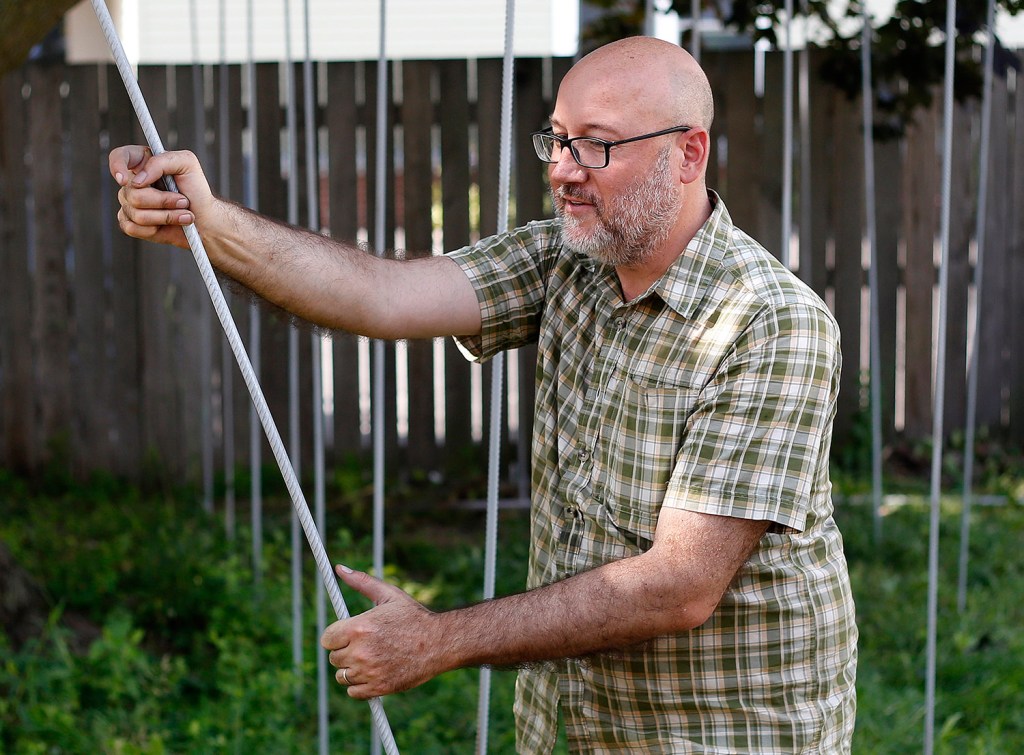
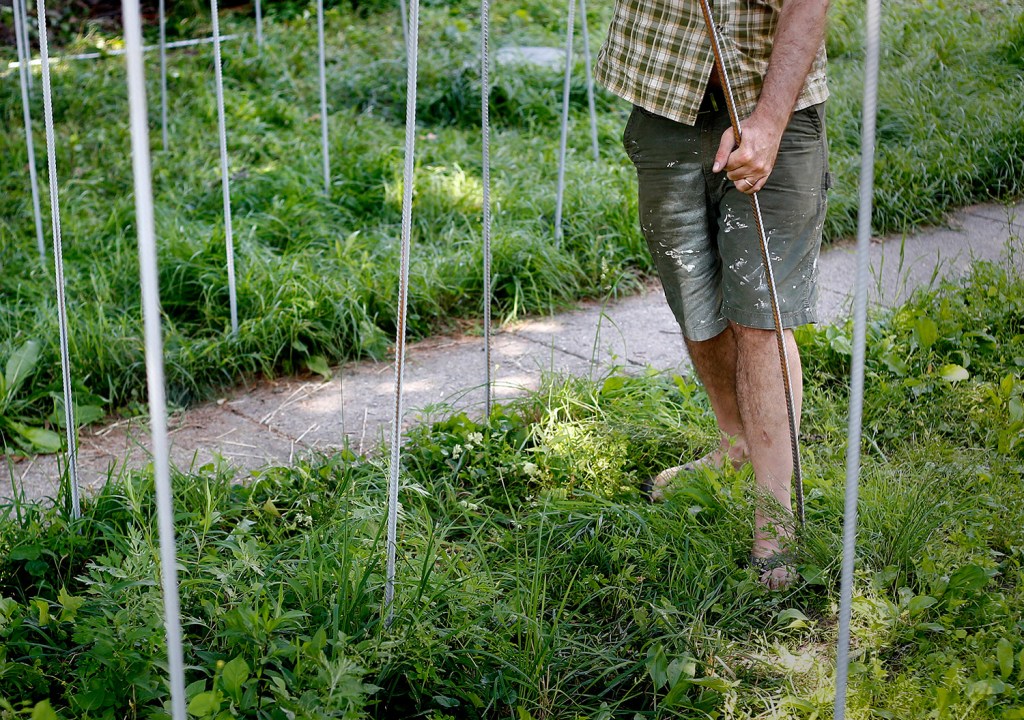
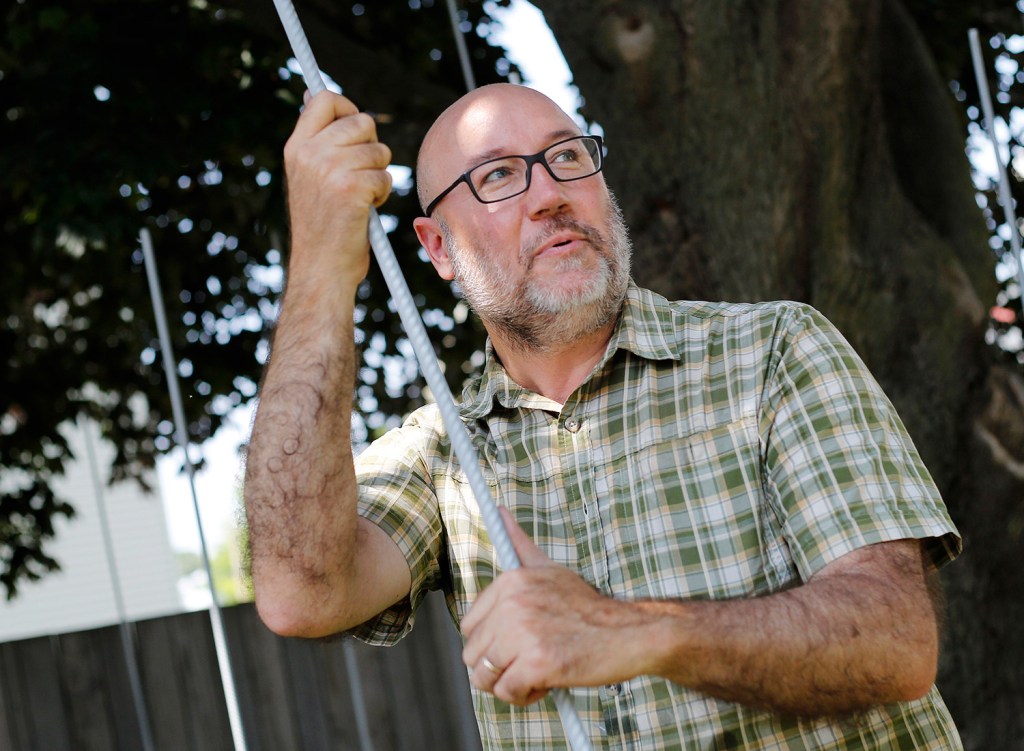
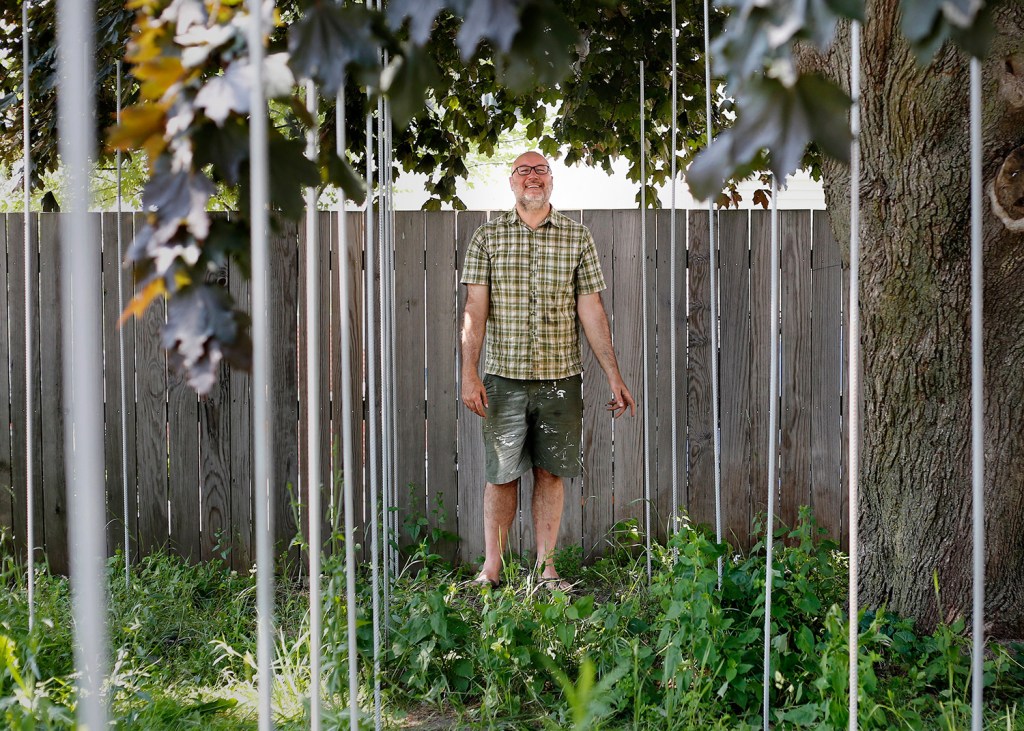
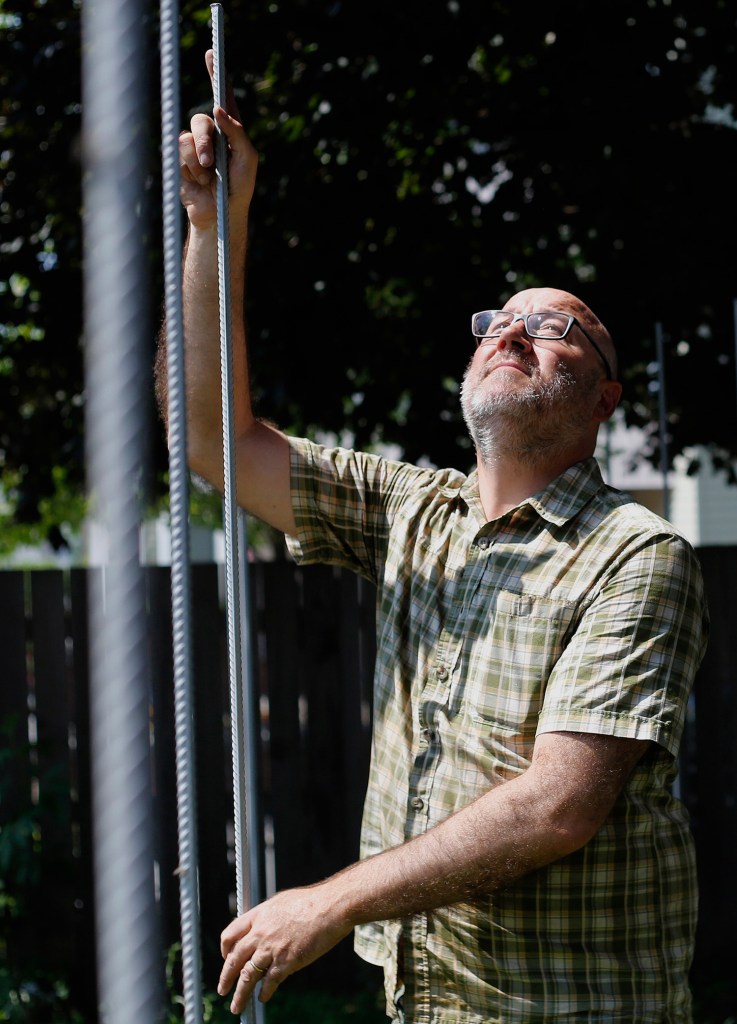

Success. Please wait for the page to reload. If the page does not reload within 5 seconds, please refresh the page.
Enter your email and password to access comments.
Hi, to comment on stories you must . This profile is in addition to your subscription and website login.
Already have a commenting profile? .
Invalid username/password.
Please check your email to confirm and complete your registration.
Only subscribers are eligible to post comments. Please subscribe or login first for digital access. Here’s why.
Use the form below to reset your password. When you've submitted your account email, we will send an email with a reset code.